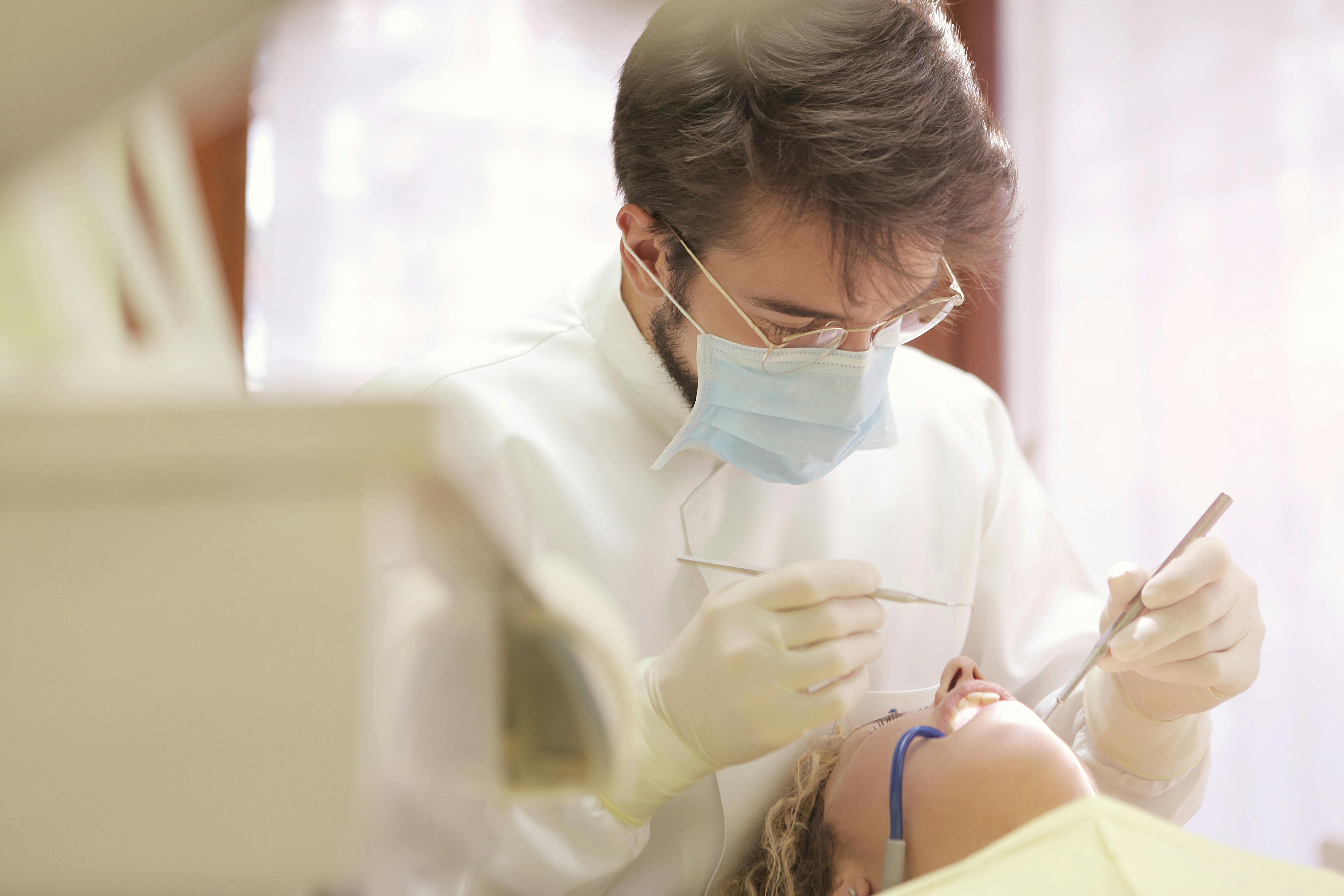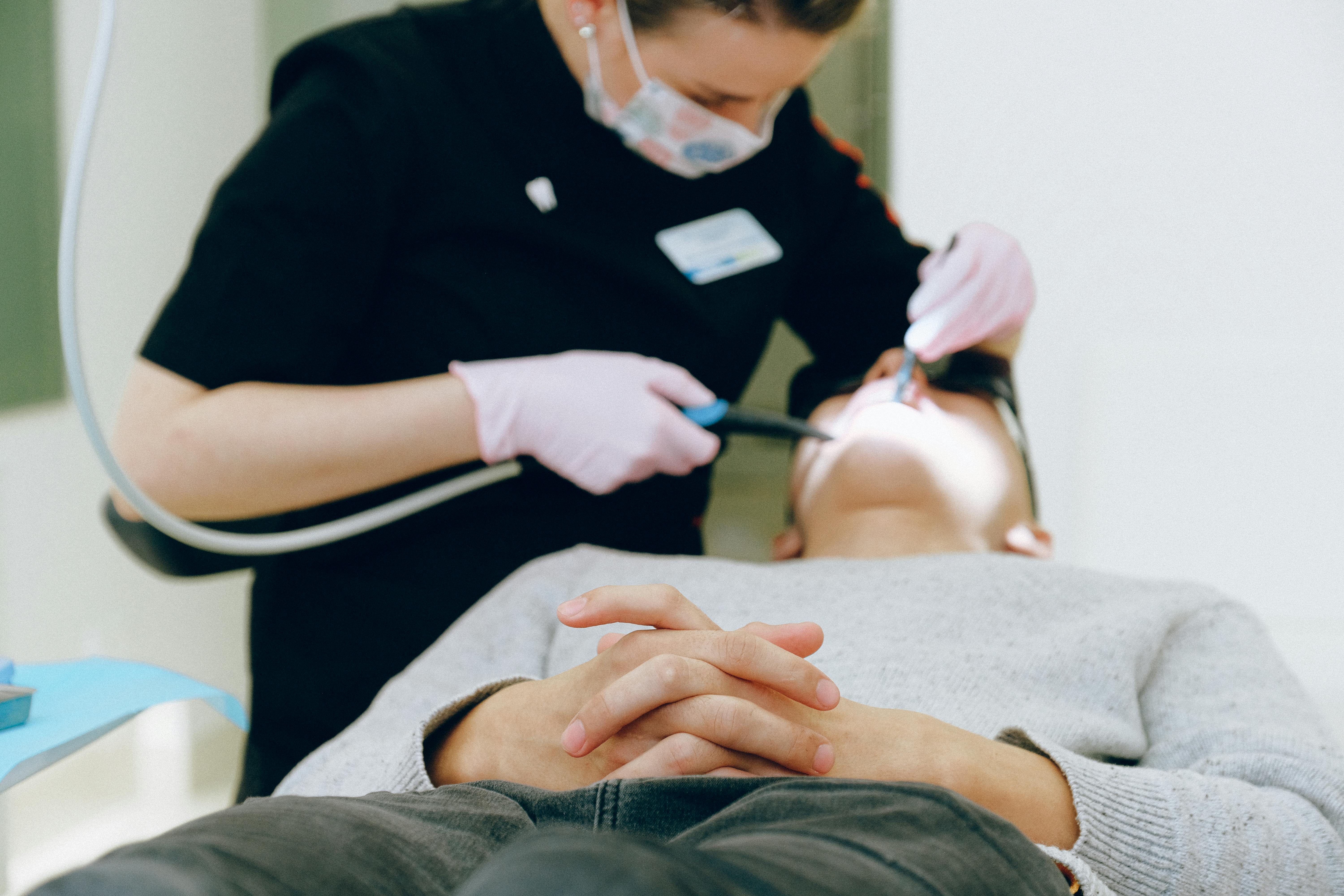Have you ever noticed that your teeth look cracked under light? If so, you may be wondering what could be causing this and whether or not it’s something to be concerned about. In this article, we’ll discuss the possible causes of cracked teeth under light and what you can do to address them. We’ll also provide some tips for preventing and protecting your teeth from further damage. Read on to learn more about why your teeth may look cracked under light.Cracks in teeth are usually caused by trauma to the mouth, such as biting down on a hard object or getting hit in the face. Other causes of dental cracks include grinding or clenching your teeth, large fillings, and weakened enamel due to acidic food and drinks. Gum disease can also weaken the enamel and lead to tooth fractures.
How to Tell If Your Teeth Are Cracked
Seeing your dentist for regular check-ups is the best way to ensure your teeth stay healthy. But if you think that you may have a cracked tooth, there are a few tell-tale signs that can help you identify the problem. Knowing what to look for can help you get the care and treatment you need as soon as possible.
The most common symptom of a cracked tooth is pain when eating and drinking, especially when consuming hot or cold foods and drinks. You may also experience sharp pains when biting down or chewing. In some cases, the pain may be dull and constant, even after eating or drinking has stopped.
Another sign of a cracked tooth is sensitivity to temperature changes in your mouth. If a certain area of your mouth is more sensitive than other areas, it could be an indication that there is a crack in one of your teeth. As well, if your tongue can feel the crack when it runs over it, this could also be an indication that there is something wrong with one of your teeth.
In some cases, you may be able to see the crack with your own eyes. If it’s visible on the surface of the tooth, then chances are it’s more serious than a minor crack and should be treated right away by a dental professional. However, many cracks are not visible to the eye so other tests may need to be performed in order for them to be detected.
If you think you may have a cracked tooth, it’s important that you visit your dentist right away so they can diagnose any problems and start treatment as soon as possible. With proper care and treatment from a dental professional, you can help restore your teeth back to health before any further damage occurs.
Preventing Cracks in Teeth
Taking care of your teeth is one of the best ways to prevent cracks from forming. Regular brushing and flossing, as well as regular dental visits, can help protect your teeth from cracking. Avoiding hard foods like hard candy or ice also helps to keep your teeth safe from cracking. Additionally, if you grind your teeth at night, wearing a custom night guard can help prevent damage to your enamel. Finally, avoiding bad habits like chewing on pens or other objects can also help keep your teeth strong and free from cracks.
If you already have a cracked tooth, it is important to seek dental treatment right away. A dentist will be able to evaluate the damage and recommend the best treatment options for you. In some cases, a filling may be enough to repair the crack, while in more severe cases, a crown or other dental restoration may be necessary. It is important to take care of any dental issues quickly so that they do not lead to further damage or decay over time.
What Are the Symptoms of Cracked Teeth?
Cracked teeth can cause a range of symptoms, depending on the severity and location of the crack. Generally, the symptoms can include pain while chewing, sensitivity to hot and cold temperatures, a visible crack in the tooth, pain when biting down on something hard or crunchy, and a dull ache that persists even when not eating. In some cases, a piece of the tooth may break off. If this happens, it’s important to seek treatment right away; otherwise, the crack may worsen. Additionally, if there is an infection present in the affected tooth or surrounding area, there may be swelling or redness in the gums.
It’s important to note that cracked teeth often don’t produce any noticeable symptoms until they become more severe. That means it can be easy to overlook them until they begin causing more pronounced pain or discomfort. That’s why it’s important to visit your dentist regularly for check-ups; they can detect early signs of cracked teeth before any major damage occurs.
Diagnosing a Cracked Tooth
A cracked tooth can be difficult to diagnose due to the fact that the crack may not always be visible on the surface of the tooth. Often, the only way to be sure that a tooth is cracked is to have it evaluated by a dentist. During a dental exam, the dentist will use specialized tools, such as a dental explorer and dental mirrors, to look for any signs of damage or cracks in the enamel. If any suspicious areas are observed, further testing may be needed to confirm whether or not there is a crack present.
In some cases, an X-ray may be used to help diagnose a cracked tooth. X-rays can reveal cracks that cannot be seen with the naked eye and can help identify where in the tooth structure the crack is located. In some instances, more advanced imaging tests such as CT scans or MRI scans may also be used to provide further information about the extent of damage.
The type of treatment required for a cracked tooth depends on how severe it is and its location within the mouth. Minor cracks may not require any treatment at all, while more serious ones may require procedures such as root canal therapy or crown placement in order to restore the appearance and function of the affected tooth.

Treatment Options for a Cracked Tooth
Cracked teeth can be a painful and frustrating problem. Fortunately, there are several treatment options available to help repair a cracked tooth. Depending on the severity of the crack, one of the following treatments may be recommended:
Bonding: Bonding is a procedure that uses a composite resin material to fill in cracks or chips in the tooth. It is usually done in one visit and does not require any drilling.
Root Canal Therapy: If there is damage to the nerve of the tooth, root canal therapy may be necessary. During this procedure, the damaged nerve is removed and replaced with a special filling material.
Crowns: In some cases, a crown may be necessary to repair a cracked tooth. A crown is an artificial covering that fits over the top of the tooth to protect it from further damage and restore its original shape and appearance.
Extraction: If the crack is too severe, extraction may be recommended. This involves removing the entire tooth from its socket in order to prevent further damage or infection.
No matter which treatment option your dentist recommends, it is important to follow their instructions carefully in order to ensure that your cracked tooth heals properly and quickly.
What Is the Prognosis for a Cracked Tooth?
The prognosis for a cracked tooth depends on the severity of the crack and how early it is detected. If detected early, a cracked tooth may be treated with a filling or crown. However, if the crack is too severe, the tooth may need to be removed. If the crack goes deep into the root of the tooth, or if it affects the nerve of the tooth, root canal therapy may be needed to save it. In some cases, a dental implant may be used to replace a severely cracked tooth that cannot be saved.
It is important to visit your dentist as soon as possible if you suspect you have a cracked tooth. Early diagnosis and treatment can help prevent further damage and help keep your teeth healthy. Your dentist will examine your mouth and take x-rays to determine where and how extensive the crack is before recommending treatment. Depending on the severity of the crack, they will recommend one of several treatments including fillings, crowns, root canals or dental implants.
Does Insurance Cover Treatment for Cracked Teeth?
The answer to this question depends on the type of insurance coverage that you have. Generally, most dental insurance policies cover the treatment for cracked teeth as long as it is deemed medically necessary. However, not all insurance plans are created equal and some may not cover certain types of treatments. It is important to check with your insurer to determine what type of coverage you have and what is covered under your policy.
When it comes to treating a cracked tooth, the most common treatments involve filling or crowning the affected tooth. If the crack is minor, then your dentist may be able to repair it with a filling. This process involves drilling away the damaged part of the tooth and replacing it with a dental filling material such as composite resin or porcelain.
If the crack is more severe, then your dentist may recommend crowning the tooth instead. This involves covering the entire surface of the tooth with a custom-made crown made from either porcelain or metal alloy materials. The crown will protect the tooth from further damage and help restore its strength and stability.
In most cases, both filling and crowning procedures are covered by most dental insurance policies. However, there may be certain exclusions or limitations depending on your plan so it is important to check with your insurer prior to undergoing treatment for a cracked tooth. Additionally, many plans also require you to meet an annual deductible before they will pay for any treatments so be sure to confirm this information as well before scheduling any appointments.
In addition to standard dental insurance coverage, there are also several discount plans available that can help make treatment for cracked teeth more affordable. These plans allow you to pay a set monthly fee in exchange for discounted rates on certain services such as fillings and crowns at participating dentists’ offices. Be sure to research these discount plans thoroughly before signing up so that you understand what services are covered and what discounts are available in order to get maximum savings on your dental care costs.

Conclusion
Cracked teeth can be caused by a number of factors, from poor dental hygiene to larger issues such as grinding and clenching. Treatment plans for cracked teeth often involve dental crowns and other restorative treatments. It is important to visit a dental professional if you notice any changes in your teeth, including cracks. By doing so, you can get the proper treatment and help prevent further damage.
Light is an effective tool that can be used to identify cracks in the teeth. A bright light, such as a flashlight, can be used to make sure that the crack is not too deep and that it does not require immediate attention from a professional. If you are concerned about the appearance of your teeth or if you suspect that there might be cracks present, it is best to seek help from a dental professional who can advise on the best course of action.
Ultimately, cracks in the teeth can result in serious damage if left untreated for too long. Therefore, it is important to take note of any changes in your teeth and visit a dentist as soon as possible if any issues arise. The earlier you seek help, the more likely it is that your teeth will remain healthy and beautiful for many years to come.
